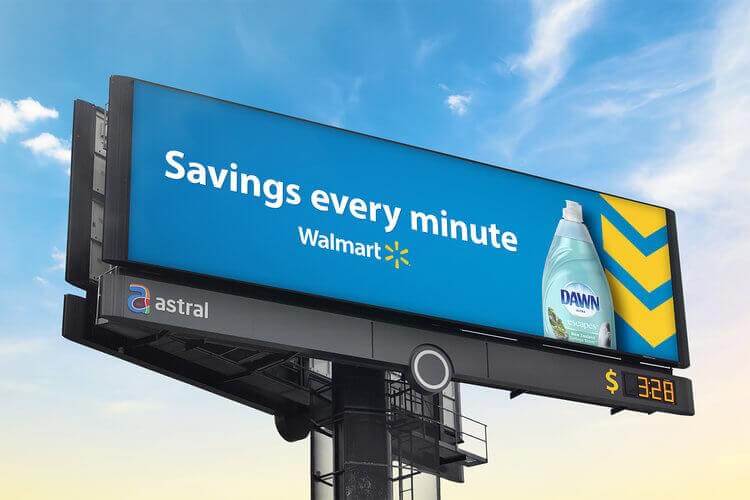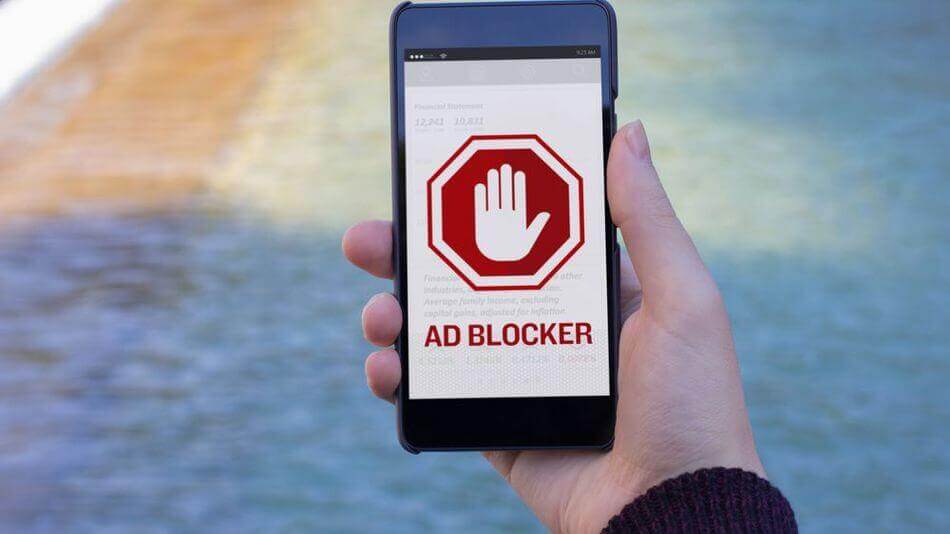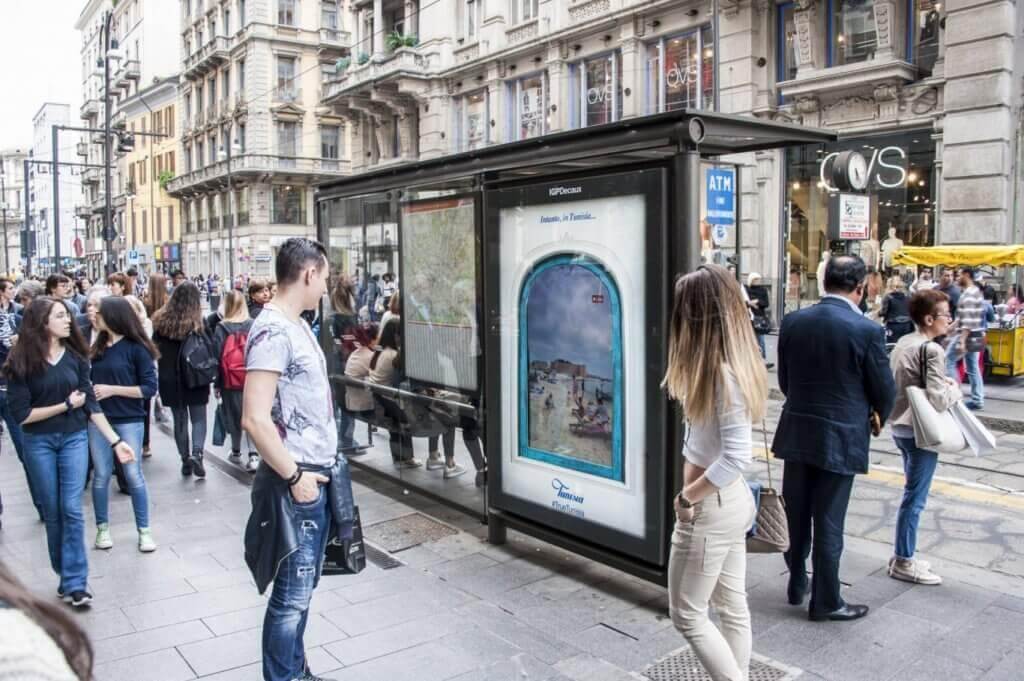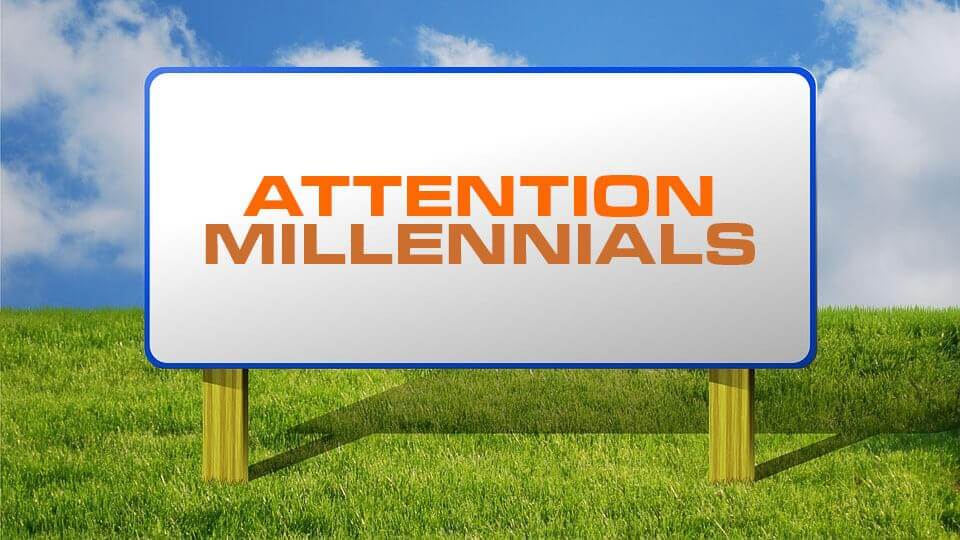
According to the latest population estimates from the U.S. Census Bureau, Millennials have officially surpassed Baby Boomers as the nation’s largest living adult generation. As a major part of the US workforce at 80 million strong, Millennials have tremendous purchasing power and are projected to spend $1.4 trillion in 2020 alone. As such, brands that nail their marketing efforts to this demographic can be sure to see top line growth now and for many more years to come.
But advertising to Millennials is easier said than done. Often dubbed the “hardest-to-reach generation”, Millennials are known to be cynical consumers and lead the charge on cord-cutting, ad-blocking, and radio streaming. One proven way brands can stay ahead of the curve when it comes to engaging with this ever-elusive audience is by advertising with out-of-home (OOH). This article explores the Millennial consumer market and examines why and how you can leverage outdoor advertising campaigns to appeal to them.
The Millennial Consumer:
While there’s no definitive, cookie-cutter answer as to what constitutes a Millennial, most agree that the Millennial generation or Generation Y refers to those born between 1981 and 1996. In 2020, Millennials are in their mid-20s to late-30s – with over 40% of the population being parents. When it comes to buying habits and media consumption, it only makes sense that Millennials share similar preferences to their preceding generation, Generation X (ages 55-40), and their succeeding generation, Generation Z (ages 24 and under). However, brands must be cognizant of the following defining traits of the Millennial mindset if they want to win them over as loyal customers:

Streamer and On-Demand Consumer: As we’ve seen over the past few years, network and cable TV are on a decline, while on-demand streaming services continue to grow in popularity. Last year, over 33% of TV consumers cancelled traditional Pay-TV services. Millennials are a big driving force behind this trend. Millennials don’t want to wait for their favorite song to come on the radio – much less wait one week to watch the next episode of their favorite TV show. For advertisers, this means that prime-time TV advertising – and TV advertising in general – is becoming increasingly unattractive and less effective.
Online Shopper: Although Millennials were not born with access to technology at their fingertips, it would be a mistake to assume that they are not as Internet-savvy as their succeeding demographic, Generation Z. According to a study conducted by UPS, Millennials make 54% of their purchases online – with 63% also saying that they complete transactions on their smartphones. The top product categories they spend on include restaurants, groceries, gas, telecommunications, hobbies, electronics, and clothing/accessories.

The Educated Consumer: Did you know that 1 in 3 Millennials have a bachelor’s degree or higher? We see that Millennials have learned a thing or two from school when it comes to making informed decisions about what they purchase. While they may have a “seen it before” mentality, Millennials are sceptical about the messages they receive from brands. According to the American multinational software company, SocialChorus, only 6% of Millennials think online advertising is credible. Another study found that 40% of Millennials refer to online reviews and testimonials – as opposed to information provided by brands themselves – before purchasing a product.
Ad-Blocking Expert: Indicative of their digital savviness, over 63% of Millennials in the US use ad blockers when surfing online. To provide a point of comparison, roughly 50% of Generation Z use ad blocking software. For brand-owners and marketing specialists, this means that the future of advertising isn’t completely digital. Social media ads, website ads, and online ads alike will only be effective if they actually reach the eyes of their targeted audience.

Authentic and Real-World Experience Seeker: If it isn’t apparent by now, marketing to Millennials can be quite a nightmare because they simply don’t like to be marketed to! Millennials crave brand authenticity, with 89% preferring simple, straightforward ads and brand integrity over other purchasing factors, such as product innovation or quality. Furthermore, 3 in 4 Millennials prefer to buy an experience over a desired product.
Why OOH is Effective in Reaching Millennials:

According to a recent global study by media company Kantar Millward Brown, OOH is the #1 preferred ad format among Millennials. OOH ads are not intrusive and interruptive – unlike online and digital ads – and flow seamlessly into the daily lives of consumers. From bus shelter signs to truck-side ads, wall murals to bulletin boards, brands can deliver messages that don’t make their audience feel overwhelmed. At the same time, consumers (especially Millennials) are taking notice of these ads! Nielsen reports that OOH reaches 80% of US travelers every week and 90% of this audience every month.
The other major advantages OOH has when compared to online advertising is that it cannot be skipped, ad-blocked, or deleted, and consumers trust what they see. In fact, 56% of consumers say they trust OOH as an advertising medium, with 58% also saying that they take some sort of action after seeing the ad – be it an online search, visiting a store, or downloading an app.
All things considered, if brands are looking to gain recognition, loyalty, and trust from the Millennial consumer, they should look no further than OOH.
How to Advertise to Millennials with OOH:

Nail the Visual and Location: Millennials are always on the go and have a rather busy lifestyle. With OOH, your company can reach Millennials when they’re out and about and provide a visual advertising experience that they respond to. As they come from an era of bold graphics, photography, and moving media, they aren’t as likely as other generations to respond to written words and would rather see something than read it. By showing your brand story rather than telling it and placing ads in high traffic locations like buildings or on the road, your message is more likely to capture the attention of the Millennial consumer.
Building Credibility through Relatability: They say that one of the biggest pitfalls of advertising is advertising at the consumer as opposed to advertising to the consumer – and this could not be more true than with the Millennial market. As a company, you need to understand what Millennials value and need. Millennials will see right through advertising gimmicks and messages that don’t align with a brand’s actions. Therefore, make your messaging reflect the fact that you’ve taken the time to understand the Millennial lifestyle, and your advertising is sure to resonate more with your audience.
Mobile Engagement: From tablets to smartphones, Millennials are no stranger when it comes to using mobile technology. To leverage the universal popularity of mobile devices, your OOH ad can encourage onlookers to perform an app-based action, scan a QR code, or even take a picture. The longer you can get your audience to engage with your advertising, the more likely they are to be influenced by it!
Are you connecting with Millennials?
With traditional media such as TV and print on the decline and digital media being ignored or ad-blocked, outdoor advertising is poised to be just what brands are looking for when it comes to engaging with the Millennial market. To fully reap the benefits that OOH can provide for your brand, make sure you keep in mind the aforementioned points on Millennial consumer behavior, and you should be well on your way to advertising success.


